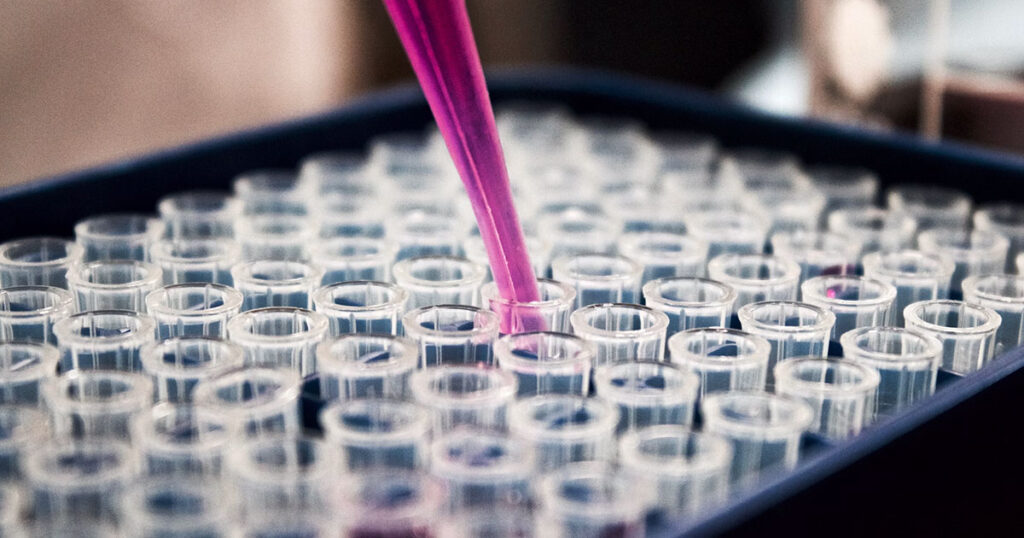In the realm of regenerative medicine and wellness, peptides have emerged as powerful agents with the potential to revolutionize healing and overall health. Here’s an in-depth look at some of the most promising peptides and their multifaceted benefits:
BPC-157: A Regenerative Powerhouse
BPC-157, a pentadecapeptide derived from human gastric juice, has garnered significant attention for its remarkable healing properties. Its efficacy spans across accelerating the repair of muscles, tendons, and ligaments, as well as treating inflammatory bowel disorders like ulcers, leaky gut syndrome, and Crohn’s disease. Originating from a protective compound in gastric juice, BPC-157 has shown extensive promise in animal studies, highlighting its role in wound healing, organ health, ulcer prevention, and efficient gastrointestinal condition management.
Additionally, BPC-157’s analgesic effects and ability to enhance skin burn healing through angiogenesis, collagen formation, and cellular repair underscore its potential as a pivotal tool in regenerative therapies and gut health optimization.
BPC-157 + TB-500: A Synergistic Duo
The combination of BPC-157 and TB-500 represents a cutting-edge formula that leverages the regenerative power of these peptides to promote tissue repair, reduce inflammation, and enhance overall healing processes. BPC-157, known for its origin in stomach protein, works synergistically with TB-500, a peptide celebrated for its tissue and muscle regeneration properties. Researchers are exploring the combined effects of these peptides on injury recovery, athletic performance, and overall health, aiming to unlock new dimensions of natural healing abilities.
CJC-1295: Elevating Growth Hormone Research
CJC-1295, a synthetic innovation of growth hormone-releasing hormone (GHRH), is a cornerstone in studies focused on enhancing muscle growth, wound healing, fat loss, and metabolic health. With or without DAC (Drug Affinity Complex), CJC-1295 elevates growth hormone and IGF-1 levels, offering a new horizon in research. Its extended half-life due to DAC inclusion enhances its efficacy in promoting sustained growth hormone release, making it a critical asset in improving muscle repair, bone density, and overall metabolic health in animals.
TB-500: Enhancing Tissue Resilience
TB-500, the synthetic counterpart of Thymosin Beta-4, features a potent 43 amino acid sequence that significantly impacts blood vessel growth, wound healing, inflammation reduction, and protection against oxidative damage. Instrumental in tissue repair, regeneration, and remodeling, TB-500 is making strides in anti-aging research and therapeutic applications. Its prowess in enhancing recovery and tissue protection positions it as a leading candidate in regenerative medicine research, focusing on improving health, longevity, and overall tissue resilience.
IGF1-LR3: Boosting Cellular Growth
IGF-1 LR3, a synthetic variant of insulin-like growth factor-1, is reengineered for enhanced performance with an extended active life. It boosts cellular growth, fat metabolism, muscle repair, and hypertrophy while effectively inhibiting myostatin. Beyond muscle building, IGF-1 LR3 shows promise for improving lactation and overall health and growth research in animals. Its contributions to cellular development, repair processes, and metabolic efficiency make it stand out in advanced research fields.
Ipamorelin: Targeted Growth Hormone Release
Ipamorelin, a synthetic pentapeptide, has gained attention for its ability to selectively stimulate growth hormone secretion from the pituitary gland. By binding primarily to the ghrelin receptor, Ipamorelin promotes growth hormone release without the side effects associated with other peptides. Ideal for researchers exploring overall vitality and wellness, Ipamorelin offers a targeted approach to health and rejuvenation.
GHK-CU: A Dermatology and Regenerative Medicine Marvel
GHK-Cu, a naturally occurring peptide, is renowned for its significant contributions to wound healing, immune function enhancement, and skin health. By stimulating collagen production, fibroblast activity, and angiogenesis, GHK-Cu facilitates potent antioxidant actions and signals for tissue repair. Its implications for improving skin health, wound recovery, and antioxidative defense mechanisms are pivotal for advancing therapeutic strategies in animals.
AOD-9604: Enhancing Body Composition
AOD9604, a fragment of human growth hormone, effectively aids in fat reduction and promotes muscle regeneration without adverse effects on insulin sensitivity. This high-purity peptide is being researched as a powerful tool for enhancing body composition, improving muscle mass, and facilitating recovery.
5 Amino - 1MQ: Neuroprotective and Cognitive-Enhancing
5-Amino-1MQ, a derivative of quinoline, is known for its neuroprotective and cognitive-enhancing properties. As a selective antagonist of the sigma-1 receptor, it is studied for increasing satellite cell proliferation, lowering cholesterol, reducing inflammation, and decreasing neurodegeneration.
Semaglutide: Revolutionizing Diabetes Treatment
Semaglutide, a peptide belonging to glucagon-like peptide-1 receptor agonists (GLP-1 RAs), is studied for treating type 2 diabetes. By stimulating insulin secretion and reducing glucagon production, semaglutide helps lower blood sugar levels naturally and promotes weight loss.
Tesofensine: Boosting Metabolism and Weight Loss
Tesofensine, a novel triple monoamine reuptake inhibitor, is a highly selective central nervous system stimulant studied for boosting metabolism and enhancing weight loss. By increasing levels of certain neurotransmitters in the brain, it reduces appetite and increases energy expenditure.
DSIP: A Key Player in Neurological Research
Delta-Sleep-Inducing Peptide (DSIP) modulates CNS endocrine and physiological processes, offering potential in reducing oxidative stress, enhancing myocardial contractility, and improving treatment for major depressive disorder and sleep quality. DSIP’s therapeutic prospects in CNS disorders make it a key focus in neurological research.
Tirzepatide: Dual Hormone Approach for Glycemic Control
Tirzepatide combines the power of GLP-1 and GIP receptors to reduce blood sugar levels and support weight management. This peptide not only helps lower A1C levels but also promotes weight loss through dual agonism of the GIP and GLP-1 receptors, contributing to its efficacy in improving glycemic control.
Melanotan II: Stimulating Melanin Production
Melanotan II mimics melanocyte-stimulating hormone (MSH), stimulating melanin production in the skin for darker pigmentation. It is also researched for its potential appetite-suppressing and libido-enhancing effects.
Conclusion
In summary, these peptides are at the forefront of research aimed at enhancing regenerative medicine, metabolic health, cognitive function, and overall wellness. As the scientific community continues to explore their potential, these peptides may unlock new possibilities for health optimization and therapeutic interventions.
Disclaimer: This blog is for informational purposes only and should not be considered medical advice. Always consult with a healthcare professional before starting any new treatment or supplement.




